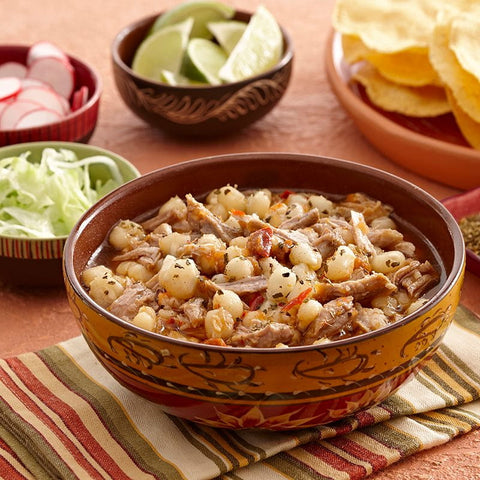Ingredients
5 Guajillo chiles, stemmed and seeded
3 3/4 cups chicken broth, divided
4 tablespoons (1/2 stick) unsalted butter, melted
3 tablespoons tequila
Salt
1 (14-pound) turkey, giblets removed and reserved
1/3 cup apricot preserves (recommended: Bon Maman)
2 teaspoons dried oregano, crumbled
2 cloves garlic
Freshly ground black pepper
Dried apricots, California chiles, fresh cilantro, for garnish
Special equipment: poultry flavor injector (available at gourmet stores)
Directions
Preheat the oven to 425 degrees F.
Place the chiles and 2 cups of chicken broth in medium saucepan. Bring to a boil, and then turn off the heat. Let the chiles stand for 5 to 10 minutes to soften.
Mix 3/4 cup of chicken broth, melted butter, and tequila in a small metal bowl. Season with salt. Using a kitchen flavor injector, inject the mixture into the thighs, breasts, and legs of the turkey. If the mixture solidifies, place the bowl over a gas burner or in a warm oven until the butter melts.
Place the turkey on a rack set in a large roasting pan. Tuck the wing tips under the turkey body. Tie the legs together with kitchen twine. Place the giblets in the pan.
Transfer the chiles with their liquid to a blender. Add the apricot preserves, oregano, and garlic and process until smooth. Season with salt and pepper, to taste.
Transfer the chile puree to a medium saucepan. Rub about 1 cup of the chile puree all over the turkey (reserve the rest for the sauce at the end), working some of it between the breast and the skin. Season the turkey generously with salt and pepper.
Add 1 cup broth to the roasting pan and roast for 45 minutes.
Reduce the oven temperature to 350 degrees F. Continue roasting the turkey until a thermometer inserted into thickest part of thigh registers 165 degrees F, about 2 hours longer, basting every 20 minutes with drippings. Cover the turkey loosely with foil if it begins to brown.
Transfer the turkey to a platter, reserving the pan juices, and allow to rest while preparing the sauce.
Strain the pan juices into a large, heavy saucepan and discard any solids. Spoon the fat from the top of the liquid and discard. Add the remaining chile puree to the saucepan and stir until well combined. Boil over high heat until slightly thickened, about 10 minutes. Season with salt and pepper, to taste.
Recipe Courtesy of Chef Marcela Valladolid, Food Network.

























